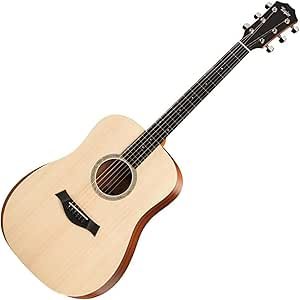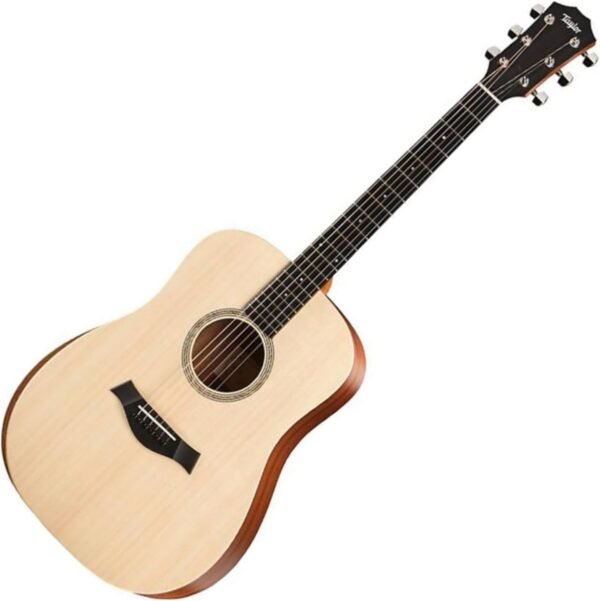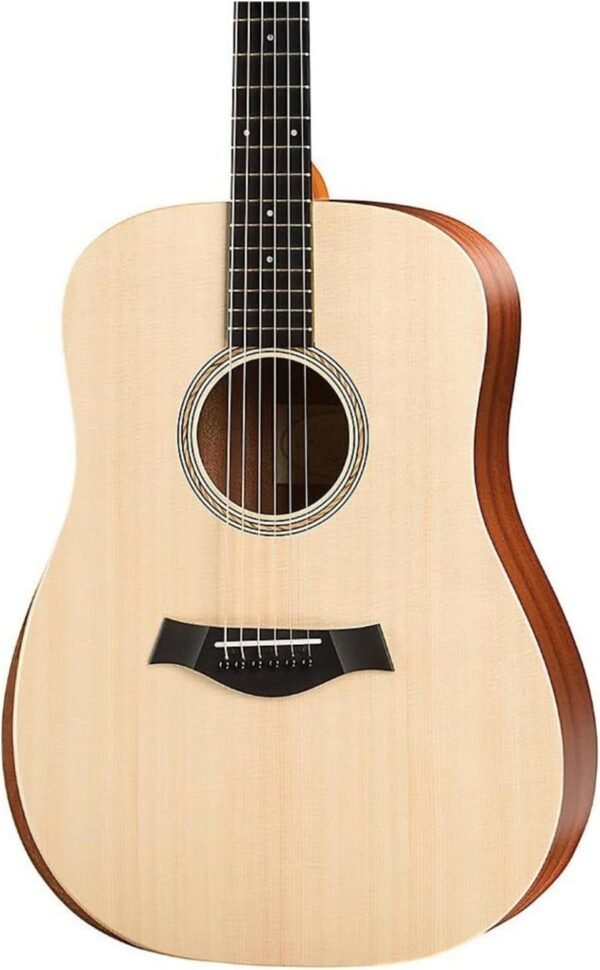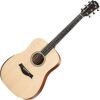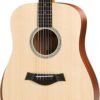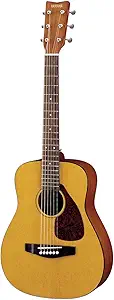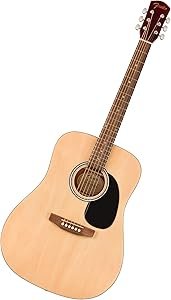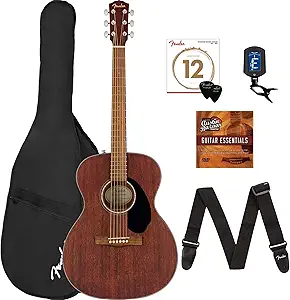Taylor Academy Series A10 Dreadnought Acoustic Guitar Review for Beginners and Strummers
Taylor Academy Series A10 Dreadnought Acoustic Guitar Review for Beginners and Strummers
- The built-in armrest makes long playing sessions far more comfortable.
- The solid Sitka spruce top offers a balanced tone with great versatility for different playing styles.
- Light gauge strings and shorter scale length make fretting and bending easy, even for beginners.
- The bold, punchy sound with a warm low end is perfect for strumming and flatpicking.
- Its durable build ensures longevity, making it a reliable choice for all skill levels.
As an Amazon Associate I earn from qualifying purchases.
Description
An Acoustic Guitar Designed with Comfort and Versatility in Mind
I had the chance to try the Taylor Academy Series Academy 10 Dreadnought Acoustic Guitar Natural, and it genuinely surprised me in more ways than one. As someone who spends hours testing and playing guitars, I can confidently say that this instrument feels like it was made to blend affordability with premium-like comfort. Whether you’re a beginner or an intermediate player, this guitar has some standout features that make it worth considering.
Design and Build Quality
Right out of the box, the guitar feels sturdy yet lightweight. The layered sapele back and sides, combined with a solid Sitka spruce top, give the instrument a natural and elegant aesthetic. I particularly loved the built-in armrest, which is a feature you’d typically only find on high-end models. This small addition made long hours of playing significantly more comfortable, as it softens the edge of the body’s lower bout.
The 24-7/8-inch scale length and 1-11/16-inch nut width make the neck feel shorter and easier to navigate, especially for players who are still getting used to fretting. The phosphor bronze strings were light and smooth, which made string bending effortless. Also, the eucalyptus fretboard and sapele neck add to the overall playability and appeal of the instrument. It’s clear that Taylor didn’t cut corners on the materials, even though this is marketed as a more budget-friendly option.
Sound Performance and Tonality
This dreadnought guitar offers a bold and balanced tonal response that suits a variety of styles. When I strummed it, I noticed the warm low end combined with bright, punchy trebles, making it ideal for strummers and flatpickers alike. The sound projection was surprisingly robust for a guitar in this price range, which makes it a strong contender for both practice and small performances.
Despite its slightly smaller scale length, the guitar doesn’t compromise on tonal depth. The solid Sitka spruce top really shines here, delivering a crisp resonance that works beautifully for genres like folk, country, and even light rock. It’s one of those instruments that can adapt to various playing styles without much effort.
Key Benefits
- Ergonomic Armrest: Enhances comfort for prolonged sessions.
- Lightweight and Portable: Easy to carry for jam sessions or lessons.
- Balanced Tonal Range: Great for both strumming and fingerpicking.
- High-Quality Materials: Solid spruce top and eucalyptus fretboard for durability.
- Beginner-Friendly Neck Design: Shorter scale and slim nut width make it approachable.
Areas of Concern
While the guitar excels in many areas, there are a few things to keep in mind:
- No Electronics: If you’re looking for a guitar with built-in pickups for live performances, this might not be the best choice unless you’re willing to add your own.
- Gig Bag Quality: Though the guitar comes with a gig bag, it’s pretty basic and doesn’t offer substantial padding or protection.
- Limited Aesthetic Options: The natural finish is elegant, but those seeking more color or design variety may feel restricted.
Competing Products
I compared this guitar to a few other models in its price range, such as the Yamaha FG800 and the Fender CD-60. While both competitors offer solid features, the Taylor Academy 10 stands out for its comfort-focused armrest and superior playability. The Yamaha FG800 has slightly better midrange tones, but it lacks the ergonomic design that makes Taylor’s guitar so inviting for extended use. Similarly, the Fender CD-60 is a great beginner option, but its tonal complexity doesn’t quite match up to the Sitka spruce top of the Academy 10.
Where this guitar wins is in its durability and ease of use, making it ideal for learners who want a comfortable yet rich-sounding instrument. It also feels more premium compared to some of its rivals, which often come with less attention to detail in their builds.
Value for Money
The Taylor Academy 10 strikes an impressive balance between quality and affordability. Considering the premium materials like solid Sitka spruce and the luxurious armrest, it offers a lot for its price point. For beginners and intermediate players, this guitar provides both a comfortable learning curve and a satisfying tonal experience. While there are cheaper options on the market, the added comfort and superior craftsmanship make this a smart investment for anyone serious about improving their skills.
To me, this guitar feels like a “bridge” model—something that offers a taste of professional-level features without requiring you to spend a fortune. It’s not just functional; it’s enjoyable to play, and that’s something that can’t always be said for entry-level instruments.
Additional information
| Item Weight | 1 pounds |
|---|---|
| Product Dimensions | 45 x 19 x 7.5 inches |
| Item model number | A10 |
| Is Discontinued By Manufacturer | No |
| Back Material | Walnut Wood |
| Body Material | Wood |
| Color Name | Natural |
| Fretboard Material | Eucalyptus |
| String Material | Phosphor Bronze |
| Top Material | Spruce Wood |
| Neck Material Type | Sapele Wood |
| Number of Strings | 6 |
| Guitar Bridge System | Fixed |
| Material Type | Wood |
| Size | 24-7/8 inches |

